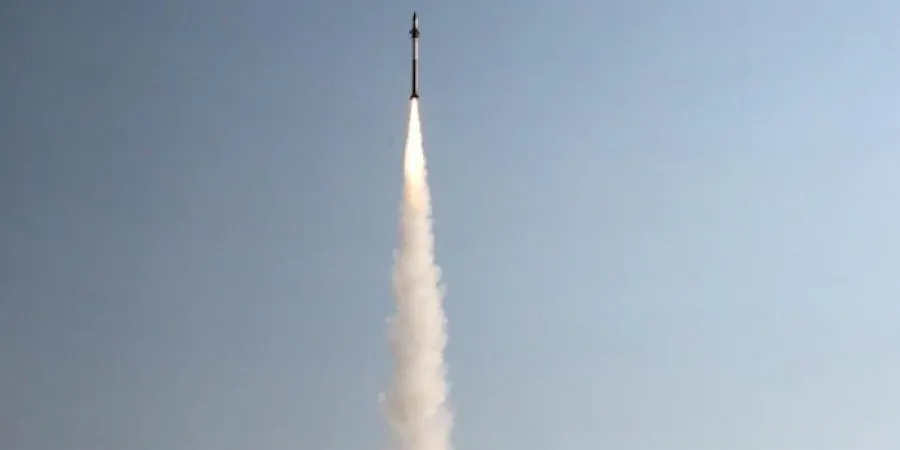US Army completes latest Iron Dome Defense System interception test
Testing prepares the system for U.S. operational forces use by ensuring it meets U.S. Army safety standards and that it will effectively operate within U.S. AMD architecture
IsraelDefense
| 02/08/2022
The US Army, in conjunction with the Israel Missile Defense Organization (IMDO), took a critical step toward fielding the first of two Iron Dome Defense System-Army (IDDS-A) batteries – intended to defend supported forces within fixed and semi-fixed locations against sub-sonic Cruise Missiles (CM), Unmanned Aircraft Systems (UAS), rockets, artillery, and mortar threats.
White Sands Missile Range hosted the missile flight test, demonstrating the capabilities of the IDDS-A. US Army soldiers assigned to 3-43 Air Defense Artillery Battalion successfully detected, tracked, and intercepted multiple CM and UAS surrogate targets. The testing prepares the system for U.S. operational forces use by ensuring it meets U.S. Army safety standards and that it will effectively operate within the U.S. AMD architecture.
Maj. Gen. Brian Gibson, Director AMD CFT: “It’s important to understand that implementation for the U.S. is about the ability to integrate this system into our air defense picture. We need to integrate this into our U.S. architecture, and to give confidence to our regional commanders that we can integrate this system safely into what they have.”
IMDO Director in the Israeli Ministry of Defense, Mr. Moshe Patel: “This is the second interception test since the two batteries were supplied to the US Army at the end of 2020. In this test as well, the system intercepted all the threats, while being interoperable with US systems.”
Brigadier General (Res.) Pini Yungman, Executive Vice President and Head of RAFAEL's Air & Missile Defense Directorate: "Once again, the Iron Dome has proven its effectiveness and operational capabilities in combat scenarios. As part of the U.S. Army's operational training, American troops operated the system which functioned with optimal effectiveness against a variety of threats and intercepted targets from different ranges.”
The Israel Missile Defense Organization (IMDO) in the Directorate of Defense Research and Development leads the development of Israel’s multi-tiered air defense array, based on four operational layers: Iron Dome, David’s Sling, Arrow 2, and Arrow 3.
The US Army plans to field both Iron Dome Defense System-Army (IDDS-A) batteries as an interim cruise missile defense solution, while the US Army continues to acquire an enduring IFPC Inc2 system. Future variants of the IFPC program include technology insertions such as directed energy, which will provide a critical protection capability against sub-sonic Cruise Missiles, Groups 2&3 Unmanned Aircraft Systems, and Rockets, Artillery, and Mortars threats.
Testing prepares the system for U.S. operational forces use by ensuring it meets U.S. Army safety standards and that it will effectively operate within U.S. AMD architecture
The US Army, in conjunction with the Israel Missile Defense Organization (IMDO), took a critical step toward fielding the first of two Iron Dome Defense System-Army (IDDS-A) batteries – intended to defend supported forces within fixed and semi-fixed locations against sub-sonic Cruise Missiles (CM), Unmanned Aircraft Systems (UAS), rockets, artillery, and mortar threats.
White Sands Missile Range hosted the missile flight test, demonstrating the capabilities of the IDDS-A. US Army soldiers assigned to 3-43 Air Defense Artillery Battalion successfully detected, tracked, and intercepted multiple CM and UAS surrogate targets. The testing prepares the system for U.S. operational forces use by ensuring it meets U.S. Army safety standards and that it will effectively operate within the U.S. AMD architecture.
Maj. Gen. Brian Gibson, Director AMD CFT: “It’s important to understand that implementation for the U.S. is about the ability to integrate this system into our air defense picture. We need to integrate this into our U.S. architecture, and to give confidence to our regional commanders that we can integrate this system safely into what they have.”
IMDO Director in the Israeli Ministry of Defense, Mr. Moshe Patel: “This is the second interception test since the two batteries were supplied to the US Army at the end of 2020. In this test as well, the system intercepted all the threats, while being interoperable with US systems.”
Brigadier General (Res.) Pini Yungman, Executive Vice President and Head of RAFAEL's Air & Missile Defense Directorate: "Once again, the Iron Dome has proven its effectiveness and operational capabilities in combat scenarios. As part of the U.S. Army's operational training, American troops operated the system which functioned with optimal effectiveness against a variety of threats and intercepted targets from different ranges.”
The Israel Missile Defense Organization (IMDO) in the Directorate of Defense Research and Development leads the development of Israel’s multi-tiered air defense array, based on four operational layers: Iron Dome, David’s Sling, Arrow 2, and Arrow 3.
The US Army plans to field both Iron Dome Defense System-Army (IDDS-A) batteries as an interim cruise missile defense solution, while the US Army continues to acquire an enduring IFPC Inc2 system. Future variants of the IFPC program include technology insertions such as directed energy, which will provide a critical protection capability against sub-sonic Cruise Missiles, Groups 2&3 Unmanned Aircraft Systems, and Rockets, Artillery, and Mortars threats.



